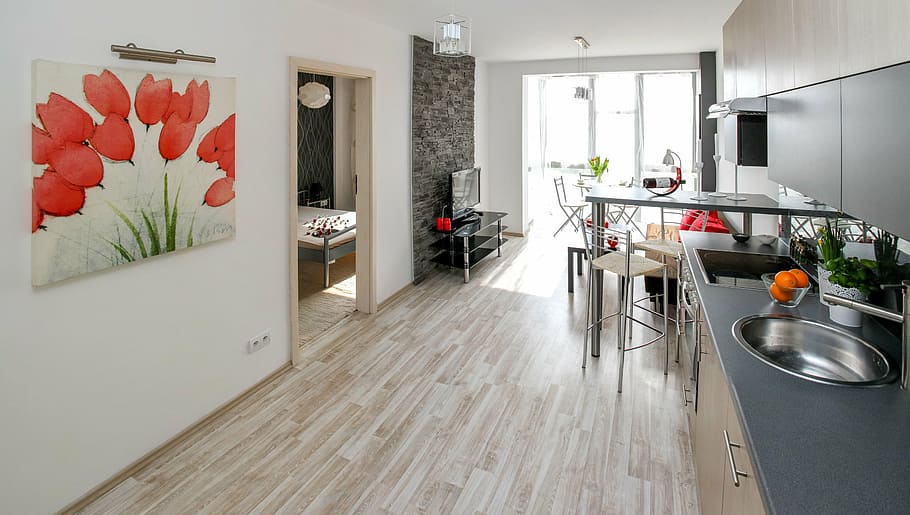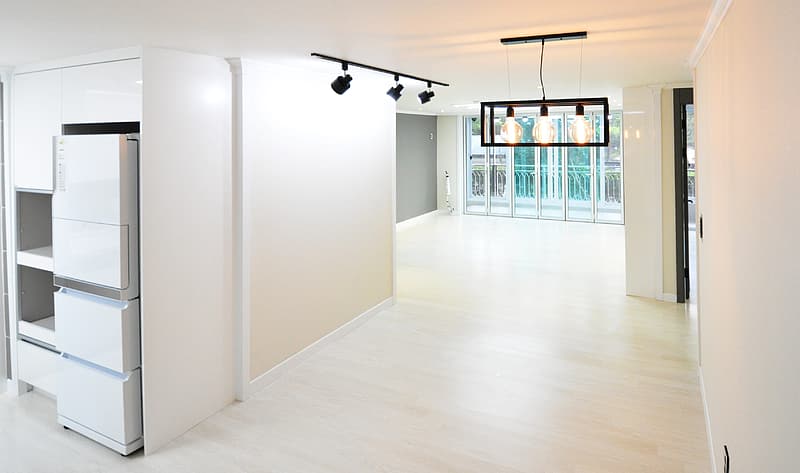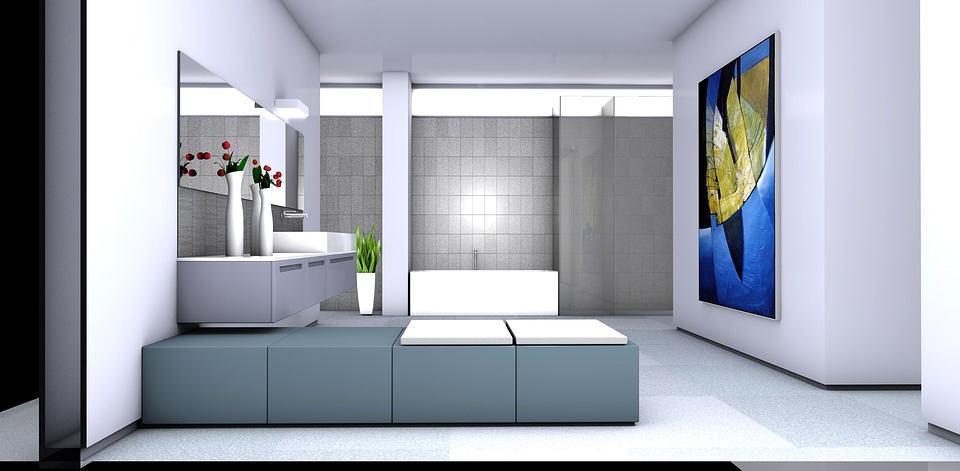You want to give a room or your facade a new look, but you are not sure what technique to adopt? To proceed, you will use different tools: roller, spray gun, brush, to be chosen according to the desired effect and the technique adopted.
Here is a small panorama of the 9 painting techniques accessible to all individuals to know: the type of paint to choose according to the part to be painted, the equipment necessary for their application and the budget to be planned.
1. Classic paints: what finish?
There are two main categories of paint: oil paint and water paint which come in different finishes, to be chosen according to the type of room you will be painting.
Matt paint is easy to apply, does not reflect light, but is messy and sensitive to humidity. It will, therefore, be chosen for the living room, bedroom or ceilings. Avoid using it in a kitchen or bathroom.
Satin paint is halfway between matte and gloss paint, it reflects light slightly. It is best used in the living room, and even in the kitchen and a child’s bedroom since it is washable, unlike matte paint.
Glossy paint reflects light. It is washable and water-resistant, so it is the ideal paint for the bathroom. Difficult to apply, it reveals all the defects of a wall, so it must be perfectly prepared before application. You will find it mainly in oil paint, therefore loaded with toxic products and resins. Ensure that your room is perfectly ventilated when you paint it!
The lacquered paint is ultra shiny, with an almost mirror-like effect. It does not tolerate any defects, and you have to hire a professional to paint a room with a quality finish. Indeed, its implementation requires in-depth technical knowledge.
Good to know: a velvet finish has recently been developed, a compromise between satin and matt. It gives the walls a silky finish. It is preferably used in the living room and bedrooms and is washable, unlike the matt finish.
2. Concrete plaster: for a concrete effect!

It is a thick product that is not applied with a brush, but with a honeycomb roller or float and is called a concrete coating. For example, you may choose this coating for the walls of a living room to give it an industrial loft look.
A few steps must be followed to apply this type of coating.
You will start by applying an undercoat with a brush, necessary for a perfect adhesion of the product on your walls.
You will then apply the plaster and then its finishing balm, to obtain a concrete wall effect with a more or less dark color depending on the chosen shade.
This application does not require in-depth technical knowledge and is within the reach of the average do-it-yourselfer. The tools used are easy to clean and can be washed with water.
Good to know: while it is used most of the time in neutral colors, the concrete coating can, however, take all the colors you want.
3. Waxed concrete coating

Tadelakt coating: for a damp room
This is not the real Moroccan tadelakt in two coats, reserved for seasoned professionals, but a coating easy to apply by any person.
It is applied in two successive coats, preferably with a stainless steel float.
We first apply the first coat and let it dry for 24 hours.
Then the second coat is applied.
When this second coat begins to dry, it is smoothed by pressing on the float hard enough to imitate the traditional smoothing by roller.
A finish allows this coating to shine and protect it from humidity. You will use it in a bathroom, including in the shower.
4. Decorative paint with a decorative effect

Whether sandblasted, brushed, metallic, velvet or glittered, imitating stone or earth, decorative paint will give your walls real originality. It gives your walls volume, reflections, and color, depending on the type you choose.
It is most often applied in a single coat after the application of a specific undercoat. It is applied using rollers and brushes whose effects make it possible to avoid having to do too much meticulous work. The design obtained on your walls will depend on your inspiration and the extent of your gestures.
It is ideal in passageway rooms because retouching is easy to do and melts immediately with the original layer.
Decorative paint
Lime paint has been used for thousands of years – it is composed of lime, water, and natural pigments that bring its color to the paint. It exists in many shades that blend in with all interiors.
You will use it in every room of the house, including the bathroom, provided you apply a finish to preserve it from humidity. Ecological and antibacterial, you will choose a rustic finish if your walls are uneven because it will hide their imperfections.
Good to know: the more layers of lime paint you apply, the more light it will reflect.
5. Special purpose paints
These are paintings that are usually used in a small area: a section of wall, a door or a cupboard and rarely on a whole wall.
There are two particularly common types:
– The canvas painting, which is found in different colors. Black and green are the most commonly used, but it also comes in pink, blue or yellow if you want a more original shade.
– Magnetic paint, which turns your walls into magnetic surfaces. It is applied in several successive coats for a reliable result (minimum two coats) and covered with classic paint, or even a painting paint.
After having delimited an area to be painted with a masking adhesive, you will apply these particular paints with a roller, crossing the passages well. Two or more coats will be necessary for a perfect result, especially with magnetic paint.
Good to know: you can easily carry out this type of work yourself, given the small surface area to be covered.
6. Exterior water-based paints
Of course, it’s not just the inside of your home that needs your care. Exterior paintwork must also be regularly renewed in order to maintain the aesthetics of your facade and its sealing qualities. There are many exterior paints in the aqueous phase (with water).
Hydro pliolites® are microporous paints that are ideal for renovation, even when the façade is in poor condition. But you cannot apply them to thick plastic coatings. They are very easy to apply, have a low odor and the tools used can be cleaned with water.
Polysiloxanes are designed for extreme conditions and are highly water-repellent because of the silicone derivative present in their composition. They offer reinforced protection against dirt. They are used for renovation, and they protect and let old surfaces breathe.
Pure acrylics are microporous and compatible with all old paints. Easy to apply, they conceal crackling. They are highly effective, have a low odor and tools can be cleaned with water.
Thick acrylics are preferred for cracked walls and old plaster. Being thick and flexible, they help hide cracks.
Lime paints are mainly used in Mediterranean regions, they give a matt and soft aspect to facades while allowing them to breathe. They naturally sanitize the atmosphere, regulate humidity and protect against insects. They cannot be washed off, their main defect is that they need to be redone every year unless they are mixed with a suitable fixative such as casein.
Hope the above helps you out. If you are looking for professionals to paint your property in Melbourne, Paint Central Florida can provide you with a quick and free estimate. Remember to leave your comments in the section below.



